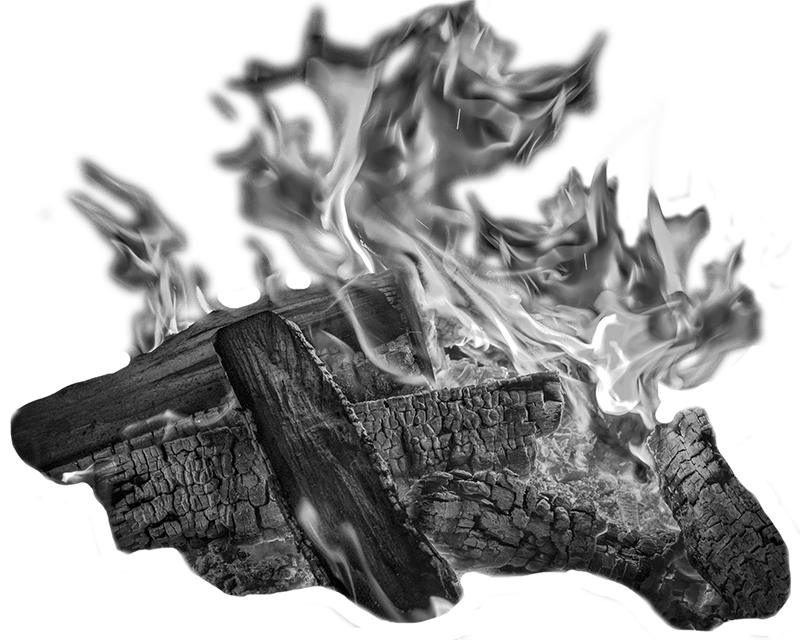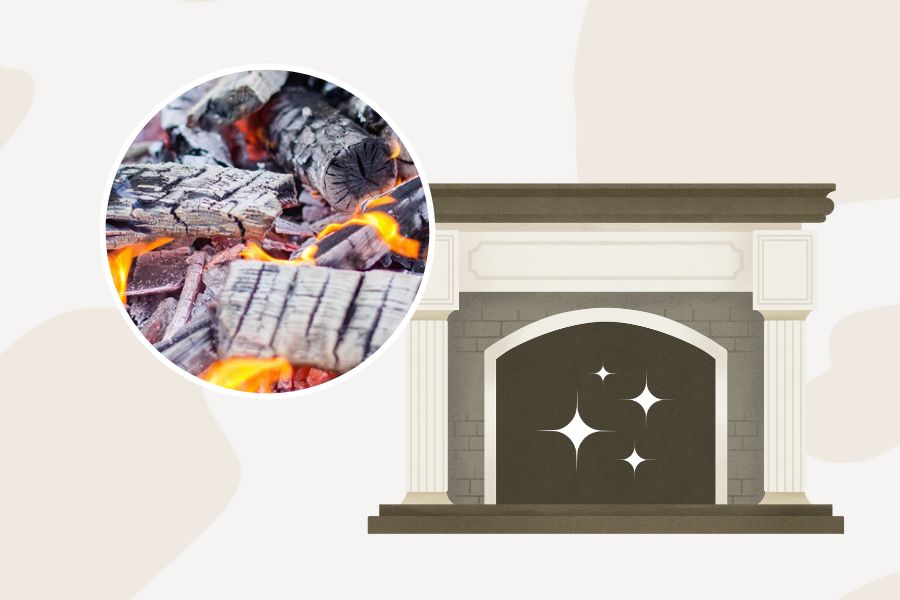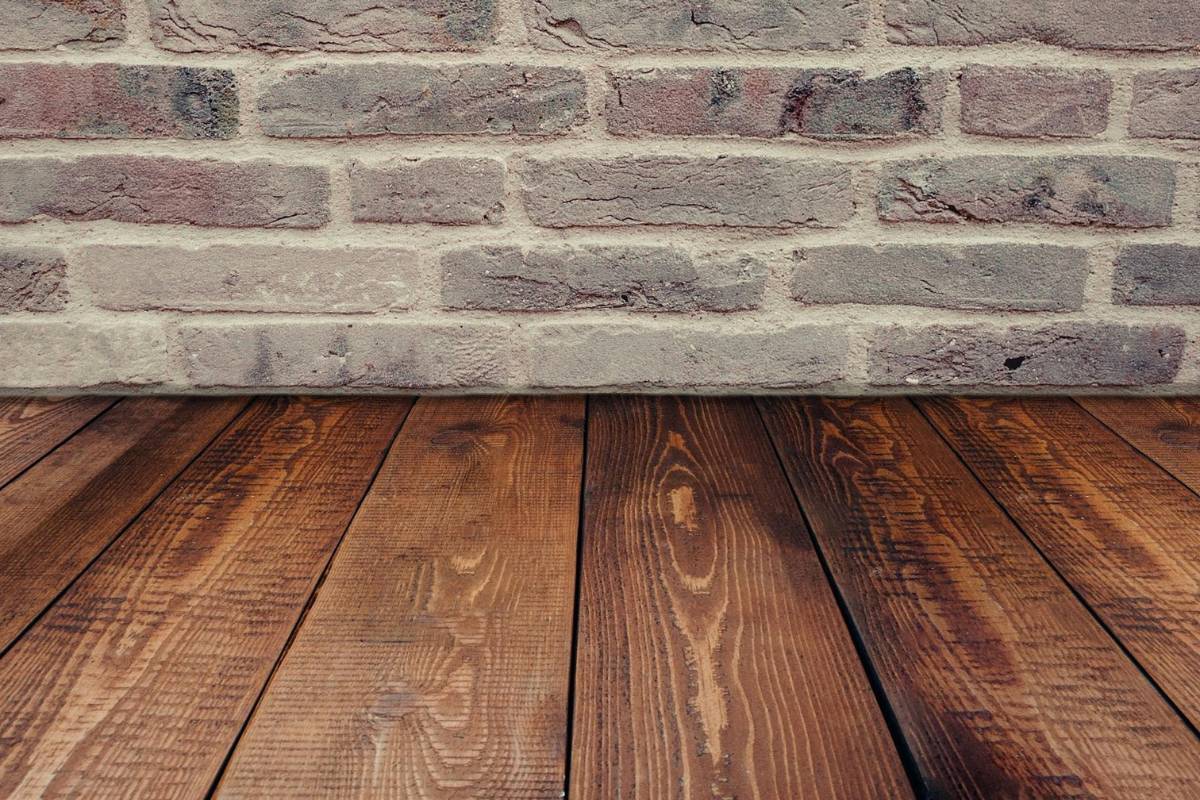Every owner of wood-burning fireplaces knows the cozy, welcoming warmth they provide. However, regular care, specifically cleaning fireplace ash, is crucial to keep the charm alive.
From the last fire’s gray ash in the fireplace to soot stains on the glass doors, cleanliness ensures your fireplace’s efficiency and safety. Whether you’re using an ash vacuum or a household vacuum, a whisk broom, or a spray bottle with a cleaning solution, it’s essential to approach the task with the right tools and methods.
Remember to don your dust mask for safety and wait until the ashes are completely cool before starting. With this guide, you’ll become a hearth cleaning expert, ready to tackle fireplace cleaning like a pro, keeping your hearth inviting for those cozy winter home fires.
Understanding the Importance of Cleaning Wood Ash from Your Fireplace
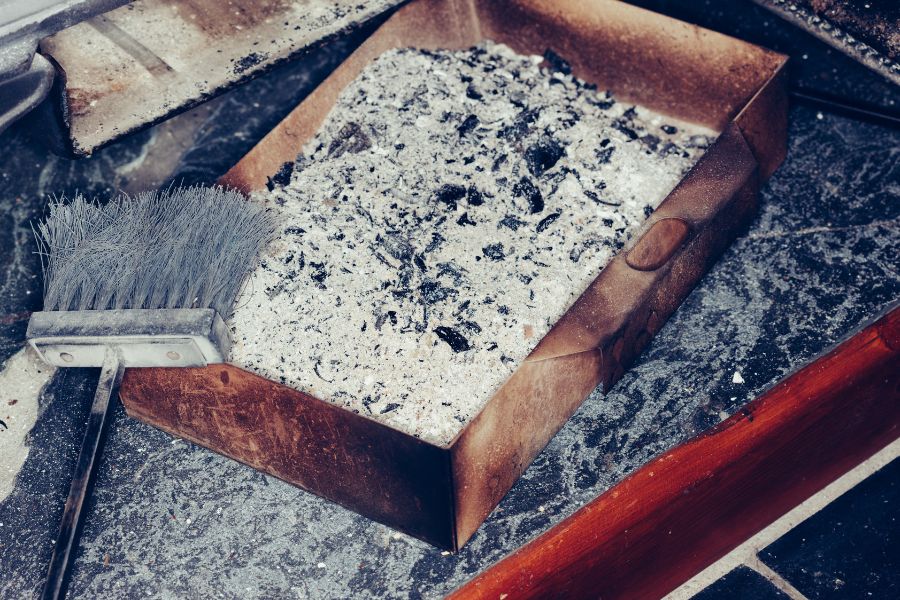
Having a fireplace at home, whether wood-burning or gas, is a delight. The warmth, the flickering flames, and the cozy atmosphere create an inviting space.
However, fireplace ash left to burn unchecked can reduce heat efficiency and lead to potential fire hazards. Removing the remaining ashes, scrubbing the soot off the firebox walls, and taking care of the dust build-up is a job you can’t avoid.
Cleaning your fireplace, including the ash pit, enhances safety. It ensures your last fire doesn’t turn into an unintended one. Besides, a clean fireplace boosts heat output and reduces smoke. So, let’s get to it!
Safety First: Pre-Cleaning Measures for Your Wood-Burning Fireplace
Before you begin, remember safety. Make sure the ashes from the last fire are cold. Fireplace ash may look cold but can stay hot for days. Don’t risk it; wait. Always wear a dust mask. Ashes, dust, and soot particles are tiny. They can irritate your lungs.
Gather your cleaning tools. You’ll need an ash vacuum or household vacuum. Include a shovel, brush, and metal bucket. Have a lid ready for the bucket to trap ash inside.
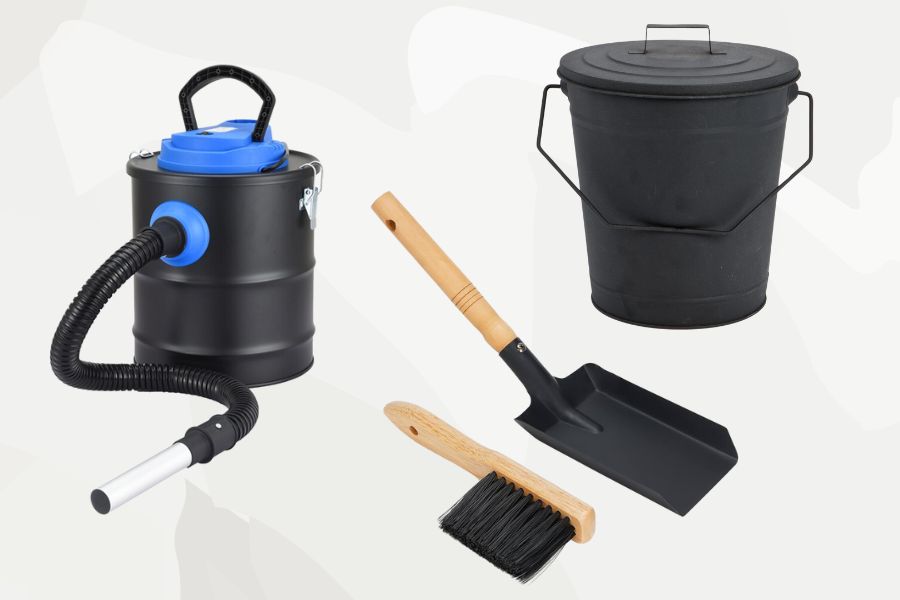
Preparation for Cleaning Your Fireplace
Prep work is a vital part of fireplace cleaning. Start by removing furniture and rugs away from the area. Cover the nearby floor with a drop cloth or plastic sheeting. This will protect your floor from ash and soot stains.
Next, remove the fireplace doors if they’re detachable, or open them wide. If you have a wood stove or gas fireplace with glass doors, it’ll need a separate cleaning routine.
Finally, put on a pair of sturdy gloves. Cleaning ash and soot can get messy. Gloves protect your hands from abrasive cleaners that remove ashes and soot.
Step-by-Step Guide on How to Clean Fireplace Ashes
A well-kept fireplace is key to enjoying cozy home fires. It starts with ash removal. Here’s your step-by-step guide to cleaning up fireplace ashes effectively.
Before you begin, ensure the fireplace and the ashes are completely cool. Any remaining heat or smoldering ashes can be a fire risk.
Utilizing Tools Such as a Metal Bucket and Ash Vacuum for Wood Ash Removal
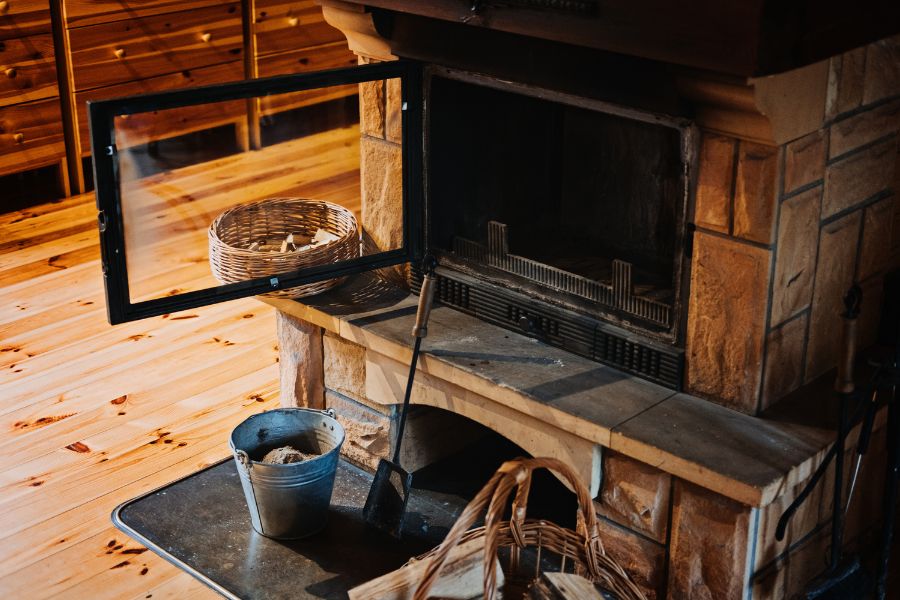
Start by scooping out the bulk of the ashes using a metal shovel. Slow, gentle movements will keep the dust minimal. Deposit the scooped ashes into a metal bucket. Always keep a lid handy to minimize dust and prevent any potential fire hazard.
Once you’ve removed most of the ashes, it’s time for the ash vacuum. An ash vacuum is designed to handle fine ash particles, making it an excellent tool for cleaning out the firebox.
A standard vacuum can work if you don’t have an ash vacuum. Just clean it afterward to prevent ash from clogging your machine.
Cleaning Fireplace Walls and Glass Doors
With the ashes removed, your next job is to clean the fireplace walls and doors. Fireplace walls, especially brick, can accumulate soot over time. Use a stiff brush to scrub down the walls. A solution of warm water and baking soda works wonders on stubborn soot. Once scrubbed, rinse the walls with warm water.
If you spot any stubborn soot spots, a razor blade can gently scrape and brush them off. But be cautious. You don’t want to scratch the brick surface underneath.
The glass door needs a gentle touch. Use a soft cloth and a solution of warm water and vinegar. The vinegar solution cuts through the grime, and the cloth won’t scratch the glass. Apply the solution, scrub gently, then wipe dry with a microfiber cloth. A standard glass cleaner will add shine to your glass doors for a finishing touch.
Ensure you rinse all areas you applied the cleaning solution. This removes any leftover cleaner that could cause issues when you light your subsequent fire. Lastly, thoroughly dry the cleaner on all areas of your fireplace before using it again.
Remember, cleaning your fireplace isn’t a one-time job. Regular care extends the life of your fireplace and maintains a safe environment for your home fires. With these steps, you’re on your way to becoming a fireplace-cleaning expert!
Once everything is cleaned and wiped dry, dispose of the ash-filled trash bag. You can use the wood ashes in your garden as they make excellent compost. If you don’t garden, ensure the ashes are cold and place them in your trash bin.
Post-Cleaning Care and Maintenance of Your Wood-Burning Fireplace
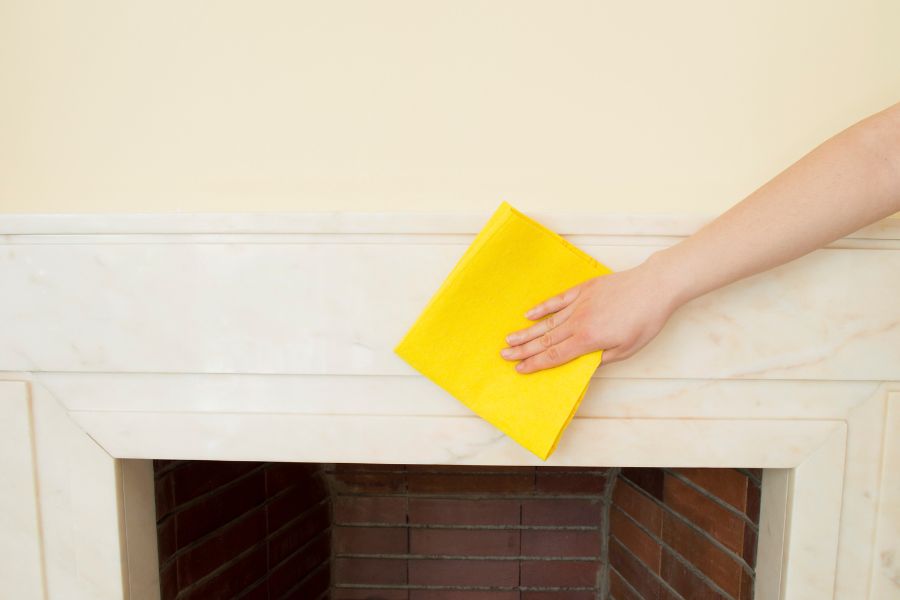
Keeping a burning fireplace in top shape needs consistent care. Once clean, maintenance is a breeze. Use a microfiber cloth to dust off the outer parts of your fireplace weekly. This includes the metal, chimney, and other external surfaces. Regularly doing this prevents the build-up of soot and dust.
Every time you burn a fire, allow the ashes to cool completely. Once cool, remove the ashes to keep your fireplace ready for the subsequent fire. A handy tip: a damp cloth is excellent for wiping down the inner parts. It helps remove soot and minimizes dust in the air.
Disposing of Wood Ash: Best Practices for Your Fireplace
Now, let’s talk about ash disposal. Once the ash is cool, sweep it into a metal bucket. Never use a vacuum immediately after a fire. The ash might be hot and can damage your vacuum or even start a fire.
If you garden, wood ash is a wonderful soil additive. It’s full of nutrients that help plants thrive. But, use sparingly. Too much wood ash can change your soil’s balance. You can dispose of the ash in your trash if you don’t garden. Just be sure the ash is completely cool before you do. Ashes can stay hot for days after a fire, so always double-check!
Conclusion: Ensuring a Clean and Safe Fireplace
Having a fireplace at home is a delight. But remember, a clean fireplace is a safe fireplace. Regular cleaning and maintenance are essential. From removing the soot to properly disposing of ash, each step keeps your fireplace looking good and working well.
So, remember these tips on how to clean fireplace ashes to heart. Ensure your fireplace remains the cozy, safe, and inviting space you love. After all, a well-kept fireplace means many more warm and comfortable fires. Happy burning!
